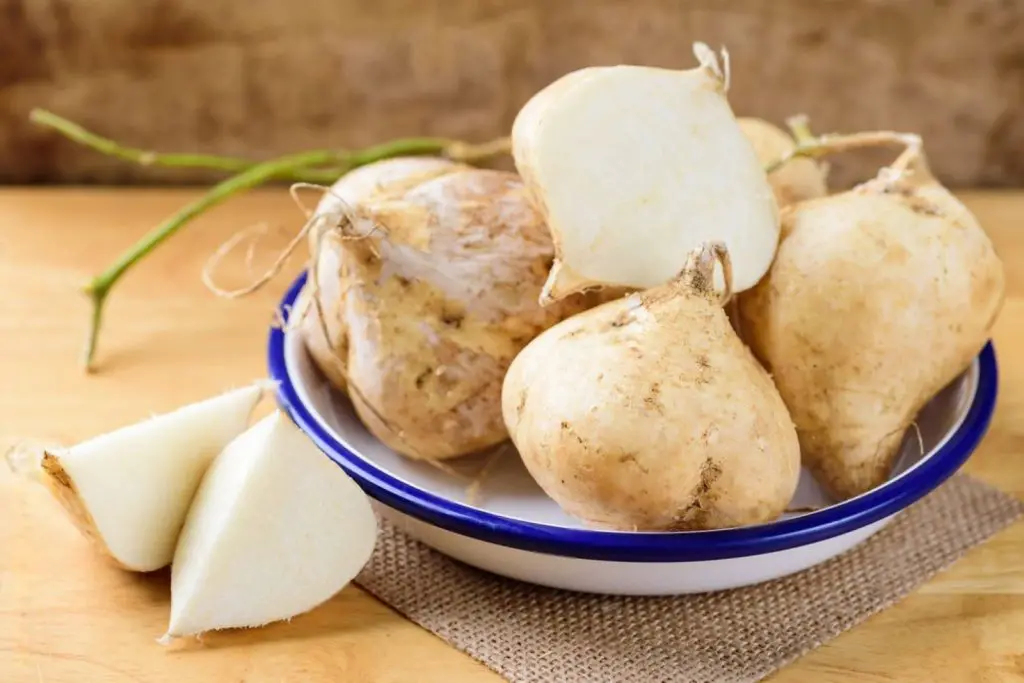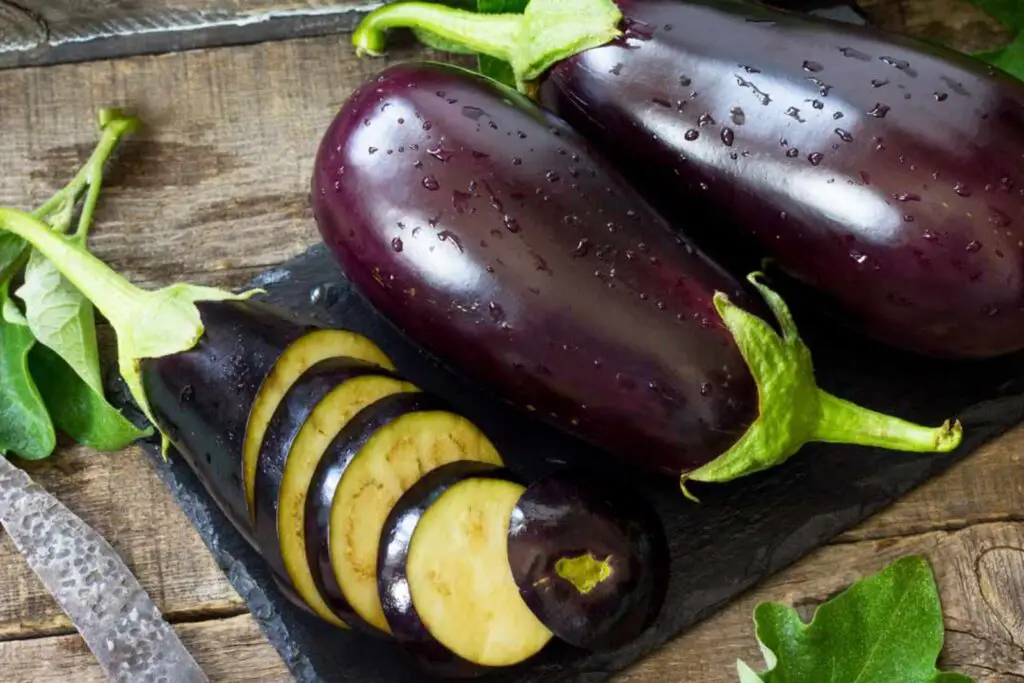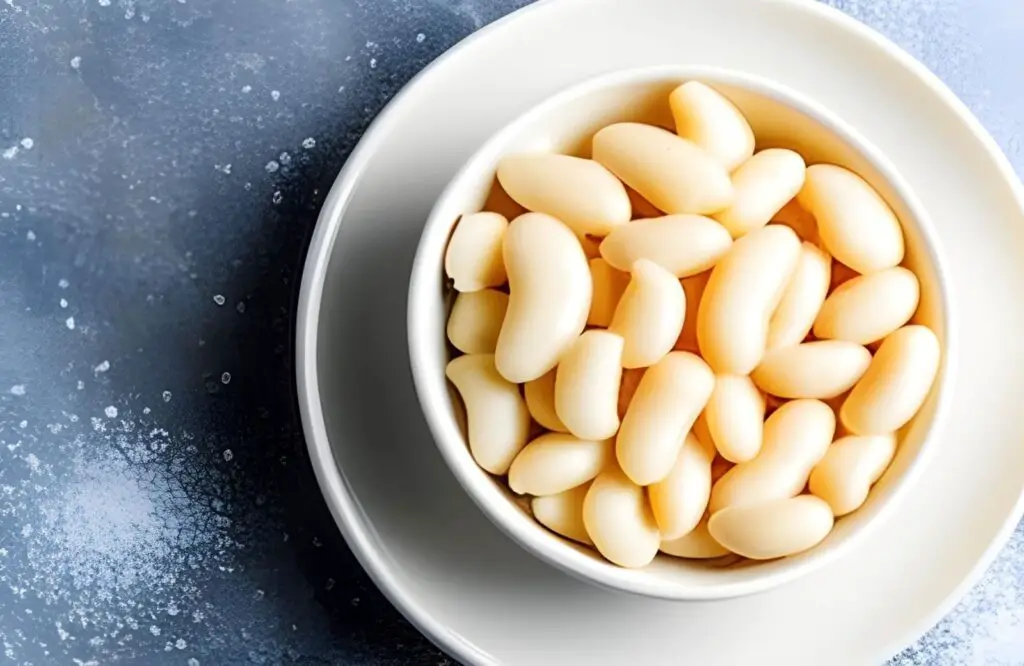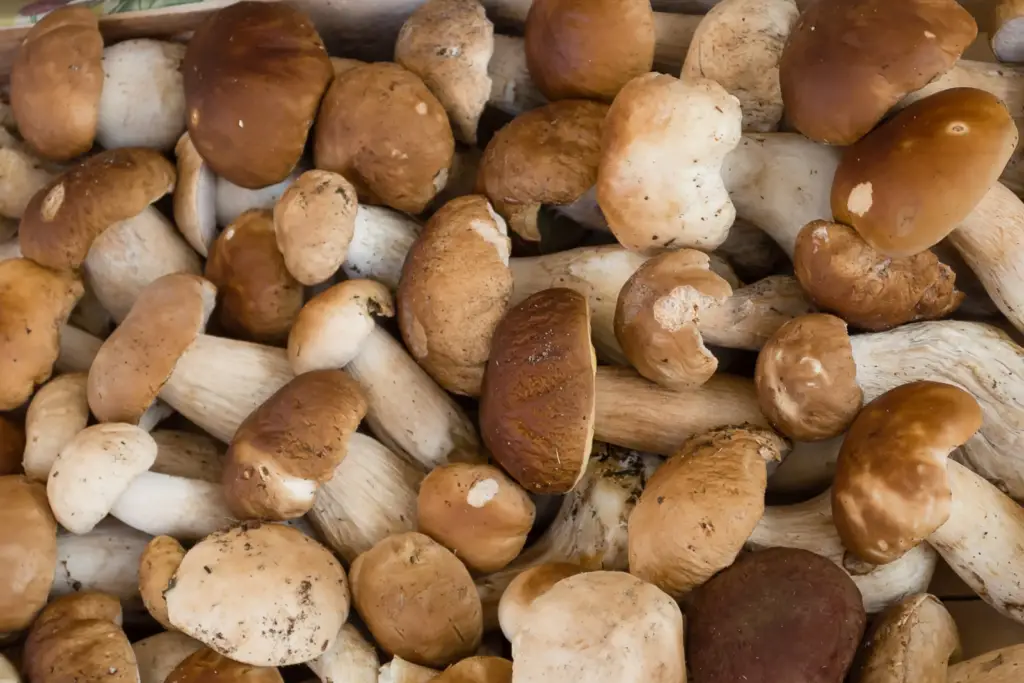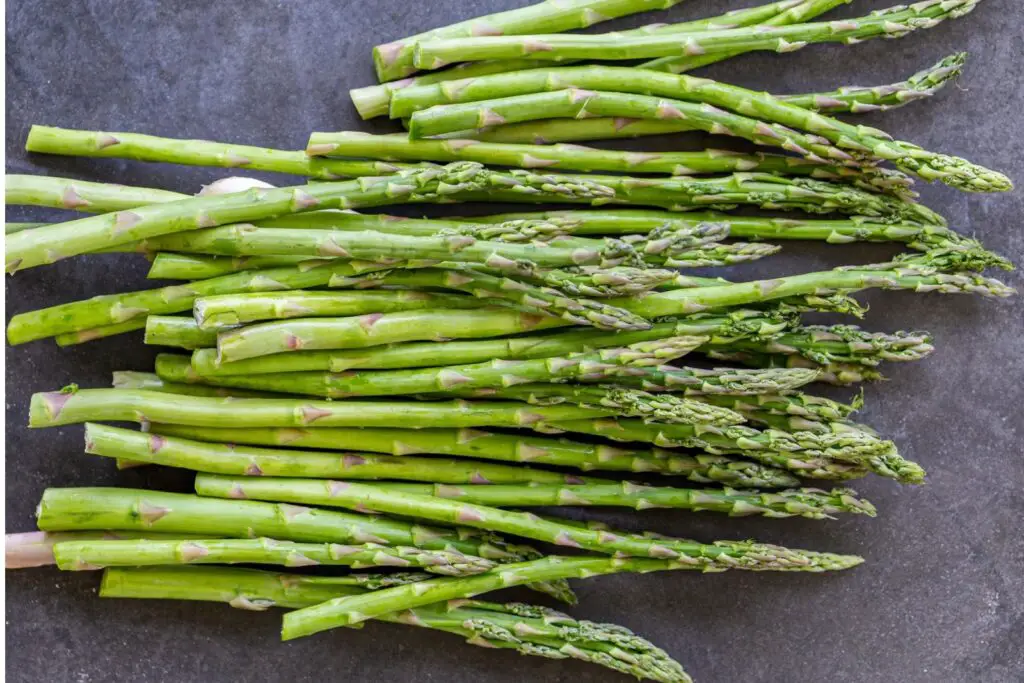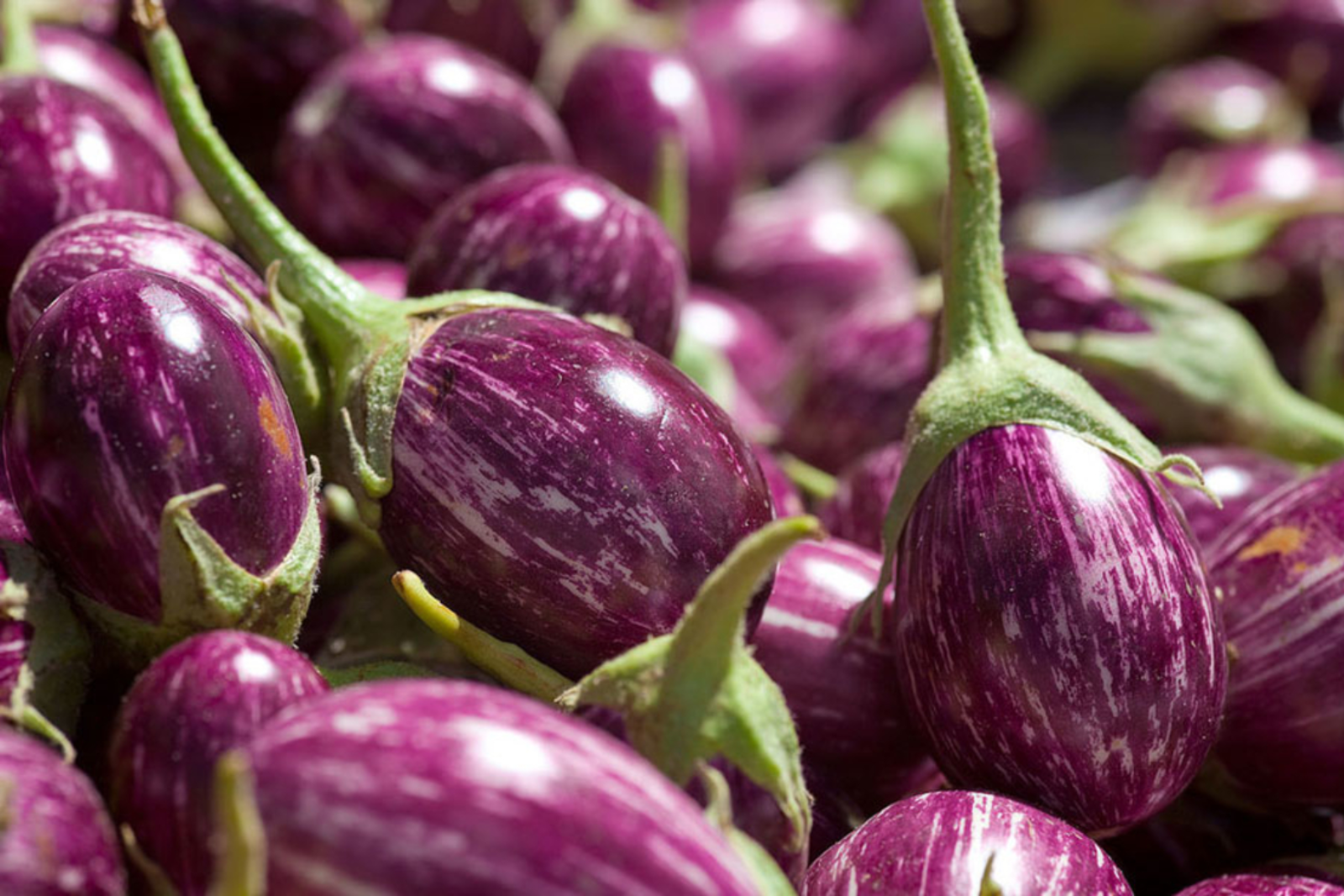
Thai eggplants are small, round eggplants that are commonly used in Thai cuisine. They have a slightly bitter taste and a firm texture, making them perfect for stir-fries, curries, and other Asian dishes. If you have a surplus of Thai eggplants or want to preserve them for future use, freezing is an excellent option. Freezing Thai eggplants allows you to enjoy their unique flavor and texture all year round. In this article, we will guide you through the process of freezing Thai eggplants, ensuring that they retain their quality and taste even after freezing.
Here’s a step-by-step guide on how to freeze Thai eggplants:
- Step 1: Select fresh Thai eggplants
- Step 2: Wash and trim the eggplants
- Step 3: Blanch the eggplants
- Step 4: Cool the eggplants
- Step 5: Drain and dry the eggplants
- Step 6: Arrange and re-freeze the eggplants
- Step 7: Package and seal the eggplants
- Step 8: Label and date the packages
- Step 9: Store in the freezer
Step 1: Select fresh Thai eggplants
Choosing fresh Thai eggplants is crucial to ensuring the best quality and taste after freezing. When selecting Thai eggplants, it’s important to look for ones that are firm and free from any blemishes or signs of spoilage. Here’s why freshness matters:
- Flavor: Fresh Thai eggplants have a vibrant and distinct flavor that adds depth to your dishes. They are slightly bitter with a hint of sweetness, making them a unique and flavorful ingredient in Thai cuisine. By starting with fresh eggplants, you can preserve their authentic taste even after freezing.
- Texture: Firm Thai eggplants have a pleasing texture that holds up well during cooking. They provide a satisfying crunch or tenderness, depending on how they are prepared. Freezing helps to maintain the texture, but it’s important to start with eggplants that are in their prime to ensure they retain their desired consistency.
- Nutritional value: Fresh vegetables, including Thai eggplants, are rich in essential vitamins, minerals, and dietary fiber. Freezing helps to retain a significant portion of their nutritional content, allowing you to enjoy the health benefits even when they are out of season.
To ensure the freshness of the Thai eggplants, you can consider the following tips:
- Purchase from a reliable source: Buy Thai eggplants from a trusted supplier or a reputable grocery store to ensure that they are fresh and of good quality.
- Check for firmness: Gently squeeze the eggplants to ensure they are firm and have a slight resistance when pressed. Avoid ones that feel too soft or have mushy spots.
- Inspect for blemishes: Examine the eggplants for any blemishes, bruises, or signs of decay. Avoid those with discoloration or mold, as these indicate spoilage.
Can I freeze Thai eggplants if they are already overripe?
It is best to freeze Thai eggplants when they are at their peak freshness. Overripe eggplants may have a softer texture and may not freeze as well. If the eggplants are significantly overripe or mushy, it’s advisable to use them for immediate cooking rather than freezing.
Step 2: Wash and trim the eggplants
Properly washing and trimming Thai eggplants before freezing is an essential step to ensure their cleanliness and to remove any unwanted debris. Trimming off the stems and discarding damaged or discolored parts is important for several reasons:
- Hygiene: Washing the Thai eggplants helps remove any dirt, dust, or residue that may have accumulated during harvesting, transportation, or storage. It’s important to eliminate any potential contaminants to maintain food safety and prevent the introduction of foreign particles into your frozen eggplants.
- Aesthetic appeal: Trimming the stems and removing damaged or discolored parts enhances the overall appearance of the Thai eggplants. By discarding any unsightly or compromised areas, you ensure that your frozen eggplants have a uniform and visually appealing appearance.
- Even freezing: Trimming the eggplants ensures that they freeze more evenly. By removing the stems, you eliminate any potential obstruction that could prevent the eggplants from freezing uniformly. Additionally, discarding damaged or discolored parts helps maintain the quality and texture of the remaining portions during freezing and thawing.
Here’s a step-by-step guide on how to wash and trim Thai eggplants before freezing:
- Rinse under cool water: Hold the Thai eggplants under cool running water and gently rub them with your hands to remove any dirt or debris. This helps eliminate surface impurities that may affect the taste and quality of the eggplants.
- Trim off the stems: Use a sharp knife or kitchen shears to cut off the stems of the Thai eggplants. Make a clean, straight cut just above the cap where the stem meets the eggplant. This ensures that no woody or tough parts are included in the frozen eggplants.
- Discard damaged or discolored parts: Inspect the eggplants and identify any areas that are damaged, bruised, or discolored. Cut these sections away and discard them. Focus on retaining the firm and healthy parts of the eggplants for freezing.
Should I peel Thai eggplants before freezing?
It is not necessary to peel Thai eggplants before freezing. The skin is edible and adds to the overall texture and flavor. However, you can peel them if you prefer a smoother texture or if the skin is particularly tough.
Can I freeze Thai eggplants without cutting them into smaller pieces?
While it is possible to freeze whole Thai eggplants, it’s generally recommended to cut them into smaller pieces for better freezing and cooking consistency. Smaller pieces freeze more quickly and thaw more evenly. Additionally, smaller pieces are more convenient for portioning and cooking.
Can I freeze Thai eggplants with the seeds?
Yes, you can freeze Thai eggplants with the seeds. The seeds are edible and do not affect the freezing process or the quality of the eggplants. However, if you prefer to remove the seeds for a smoother texture, you can do so before freezing.
Step 3: Blanch the eggplants
Blanching Thai eggplants before freezing is a crucial step that helps preserve their color, flavor, and texture. Blanching involves briefly immersing the eggplants in boiling water and then immediately transferring them to an ice bath. Here’s why blanching is beneficial:
- Color retention: Blanching helps preserve the vibrant color of Thai eggplants. The hot water blanches the eggplants and slows down enzyme activity, which can cause discoloration or loss of color. By blanching them briefly, you can maintain the attractive green or purple hue of the eggplants even after freezing.
- Flavor preservation: Blanching helps lock in the natural flavors of Thai eggplants. The short exposure to boiling water helps to retain the characteristic taste and aroma of the eggplants. It also helps to remove any raw or bitter flavors that may be present.
- Texture maintenance: Blanching partially cooks the eggplants, resulting in a slight softening of the flesh. This process helps to preserve the texture of the eggplants during freezing. It can prevent them from becoming overly mushy or tough when thawed and cooked later.
Here’s a step-by-step guide on how to blanch Thai eggplants:
- Bring a pot of water to a boil: Fill a pot with enough water to fully submerge the eggplants. Place the pot on the stovetop over high heat and bring the water to a rolling boil.
- Carefully place the eggplants into the boiling water: Gently lower the trimmed Thai eggplants into the boiling water using a slotted spoon or tongs. Be cautious to avoid splashing hot water.
- Let them blanch for 2 minutes: Allow the eggplants to blanch in the boiling water for about 2 minutes. The exact time may vary slightly depending on the size and thickness of the eggplants. Blanching for too long may result in overcooking, so keep a close eye on them.
Can I freeze Thai eggplants without blanching them?
Blanching Thai eggplants before freezing is recommended to preserve their color, flavor, and texture. It helps inactivating enzymes and maintaining their quality. However, if you prefer not to blanch them, be aware that the texture and color may be slightly compromised.
Step 4: Cool the eggplants
After blanching Thai eggplants, it is important to cool them promptly to halt the cooking process and preserve their vibrant color, flavor, and texture. Cooling the eggplants in an ice water bath provides several benefits:
- Halting the cooking process: Placing the blanched eggplants in ice water rapidly lowers their temperature, effectively stopping the cooking process. This is crucial to prevent them from becoming overcooked or mushy. Cooling them promptly helps retain their desired texture and firmness.
- Preserving color: The sudden temperature change from hot to cold helps lock in the vibrant color of the Thai eggplants. It helps to maintain their appealing green or purple hue, ensuring they remain visually attractive even after freezing and thawing.
- Maintaining flavor: Rapidly cooling the eggplants helps preserve their natural flavors. By stopping the cooking process, you retain the fresh taste and aroma of the eggplants, ensuring they contribute to the overall flavor profile of your dishes when you use them later.
Here’s a step-by-step guide on how to cool Thai eggplants after blanching:
- Prepare an ice water bath: Fill a large bowl or sink with cold water and add plenty of ice cubes to make it icy cold. The water should be deep enough to fully submerge the eggplants.
- Transfer the blanched eggplants to the ice water bath: Using a slotted spoon or tongs, carefully remove the blanched eggplants from the boiling water and immediately transfer them to the ice water bath. Submerge them fully to ensure even cooling.
- Let them cool for about 2 minutes: Allow the eggplants to remain in the ice water bath for approximately 2 minutes. This duration is sufficient to cool them down and halt the cooking process. You can gently stir them in the water to ensure all sides cool evenly.
Step 5: Drain and dry the eggplants
After cooling Thai eggplants in an ice water bath, it is important to drain them thoroughly and remove excess moisture before freezing. Properly draining and drying the eggplants offer several benefits:
- Preventing ice formation: Removing excess moisture from the surface of the eggplants helps prevent ice crystals from forming during freezing. Excess moisture can lead to freezer burn or a deterioration in texture. By drying the eggplants, you reduce the likelihood of these issues and ensure better quality after freezing.
- Avoiding sogginess: Excess moisture on the surface of the eggplants can make them soggy when frozen. Drying them helps maintain their desired texture and prevents them from becoming waterlogged, which can affect the overall quality and taste.
- Preventing clumping: Ensuring that the eggplants are dry helps prevent them from sticking together or forming clumps when stored in the freezer. Dry surfaces minimize the chances of the eggplants freezing together, making it easier to separate and use them individually as needed.
Here’s a step-by-step guide on how to drain and dry Thai eggplants:
- Remove from the ice water bath: Using a slotted spoon or tongs, carefully lift the cooled Thai eggplants out of the ice water bath and transfer them to a colander or a clean kitchen towel.
- Drain thoroughly: Allow the eggplants to drain in the colander for a few minutes. This allows any excess water to drip away naturally.
- Pat dry with a kitchen towel or paper towels: Gently press a clean kitchen towel or paper towels against the eggplants to absorb any remaining moisture. Be careful not to crush or damage the eggplants during the drying process.
Note: If using paper towels, choose ones that are free from fragrance or any chemicals that could transfer onto the eggplants.
Step 6: Arrange and re-freeze the eggplants
After draining and drying the Thai eggplants, it’s important to arrange them properly and undergo a process called flash-freezing. Flash-freezing involves freezing the eggplants individually before packaging them. This step is beneficial for several reasons:
- Maintain shape and texture: Flash-freezing the eggplants individually helps preserve their shape and texture. By arranging them in a single layer without touching each other on a baking sheet or tray, they freeze quickly and maintain their individual integrity. This prevents them from sticking together or forming a solid block of frozen eggplants.
- Easy portioning: Flash-freezing allows for easy portioning when you want to use the eggplants later. Since they are frozen individually, you can easily take out the desired amount without thawing the entire batch.
- Quick freezing: Flash-freezing involves exposing the eggplants to very low temperatures for a short period. This rapid freezing process helps to minimize the formation of large ice crystals, which can lead to a loss of quality and texture. Quick freezing helps to retain the flavors, colors, and textures of the eggplants.
Here’s a step-by-step guide on how to arrange and flash-freeze Thai eggplants:
- Prepare a baking sheet or tray: Line a baking sheet or tray with parchment paper. The parchment paper prevents the eggplants from sticking to the surface during freezing.
- Arrange the eggplants: Place the drained and dried Thai eggplants in a single layer on the prepared baking sheet or tray. Ensure they are spaced apart and not touching each other to prevent them from freezing together.
- Place in the freezer: Carefully transfer the baking sheet or tray with the eggplants to the freezer. Make sure it is placed on a stable and flat surface. Let the eggplants freeze for about 1 to 2 hours, or until they are firm and completely frozen. The exact freezing time may vary depending on the size and thickness of the eggplants.
- Check for firmness: Once the eggplants are frozen, gently touch them to ensure they are firm throughout. This confirms that they are properly frozen and ready for packaging.
Can I freeze Thai eggplants in a plastic bag without flash-freezing?
Flash-freezing individually before packaging is recommended to prevent the eggplants from sticking together. However, if you don’t have the option to flash-freeze, you can place them in a single layer in a plastic bag, ensuring they are not crowded. Just be aware that they may clump together during freezing.
Step 7: Package and seal the eggplants
After flash-freezing the Thai eggplants, it’s important to package and seal them properly for long-term storage in the freezer. Packaging the eggplants in airtight containers or freezer bags helps to maintain their quality and prevent freezer burn. Here’s why this step is important:
- Protection against freezer burn: Freezer burn occurs when frozen food is exposed to air, leading to dehydration and deterioration in texture and taste. By transferring the frozen Thai eggplants into airtight containers or freezer bags, you create a barrier that prevents air from coming into contact with the eggplants, reducing the risk of freezer burn.
- Maintain flavor and texture: Proper packaging helps to maintain the flavors and textures of the Thai eggplants during freezer storage. It prevents the loss of moisture and helps to preserve their original taste and texture when thawed and cooked.
- Organization and portioning: Packaging the eggplants individually or in appropriate portion sizes allows for convenient use and easy organization. Whether you wrap each eggplant individually with plastic wrap or place them in freezer bags, it helps in portioning and minimizes the need to thaw more than necessary.
Here’s a step-by-step guide on how to package and seal Thai eggplants for freezing:
- Transfer the frozen eggplants: Carefully transfer the flash-frozen Thai eggplants from the baking sheet or tray into airtight freezer bags or containers. Alternatively, if you prefer individual wrapping, you can wrap each eggplant tightly with plastic wrap.
- Remove excess air: Before sealing the bags or containers, remove as much air as possible to minimize the chances of freezer burn. You can use a straw to suck out the excess air from the freezer bags or press down gently on the plastic wrap to eliminate any air pockets.
- Seal tightly: Ensure the bags or containers are tightly sealed to maintain an airtight environment. If using freezer bags, make sure the zip-top closure is securely fastened. If using containers, check that the lids are properly closed.
Step 8: Label and date the packages
Labeling and dating the packages of frozen Thai eggplants is an important step for maintaining organization, tracking freshness, and ensuring that you use them in the proper order. Here’s why this step is crucial:
- Organization and identification: By labeling each package with the contents (Thai eggplants), you can easily identify them in your freezer. This helps avoid confusion and allows you to locate the specific ingredient you need without defrosting multiple packages.
- Tracking freshness: Date labeling allows you to keep track of when the Thai eggplants were frozen. Over time, frozen foods can degrade in quality and taste. By noting the freezing date, you can have a reference point to help determine the freshness of the eggplants and prioritize using the oldest ones first.
- Proper rotation: Labeling with the date ensures that you follow the “first in, first out” principle when using the frozen Thai eggplants. Using the oldest packages first helps prevent food waste and ensures that you maximize the quality of the ingredients.
Here’s how to label and date the packages of frozen Thai eggplants:
- Use a permanent marker: Grab a permanent marker that will not smudge or fade over time. Make sure it’s appropriate for writing on the packaging material you’re using, such as freezer bags or containers.
- Write the contents: Clearly write “Thai Eggplants” on each package. This will help you identify them easily.
- Note the date of freezing: Write the date of freezing on each package. Include the month, day, and year. For example, “Frozen: MM/DD/YYYY”.
- Place in a visible location: Choose a visible area on the package to write the label, such as the front or top. This makes it easy to quickly identify the contents and date without having to handle each package.
Step 9: Store in the freezer
Once the packages of Thai eggplants are properly labeled and sealed, it’s time to store them in the freezer. Proper storage is essential to maintain the quality, taste, and texture of the frozen eggplants. Here’s why this step is important:
- Temperature control: Freezers should be set to maintain a constant temperature of 0°F (-18°C) or below. This low temperature prevents bacterial growth and enzymatic activity, preserving the quality and safety of the Thai eggplants for an extended period.
- Quality retention: Storing the frozen Thai eggplants at the recommended temperature helps maintain their flavors, colors, and textures. It prevents the formation of large ice crystals and minimizes the risk of freezer burn, which can degrade the quality and affect the taste and texture of the eggplants.
- Storage duration: The frozen Thai eggplants can be stored for up to 10 to 12 months at the proper temperature. However, for the best quality and taste, it’s generally recommended to use them within the first six to eight months.
Here’s how to store the Thai eggplants in the freezer:
- Choose a stable position: Select a stable and level area in your freezer to place the sealed packages of Thai eggplants. Ensure that the packages are not overcrowded or squeezed together, allowing air to circulate around them for efficient freezing.
- Maintain the recommended temperature: Check the temperature settings of your freezer and adjust if necessary to maintain a constant temperature of 0°F (-18°C) or below. Keep in mind that frequent opening and closing of the freezer door can affect the internal temperature, so minimize unnecessary access.
- Store for the appropriate duration: Frozen Thai eggplants can be stored for up to 10 to 12 months, but it’s best to use them within the first six to eight months for optimal quality. Regularly check the packages for any signs of freezer burn, unusual odors, or texture changes, and discard any that show signs of deterioration.
Other related questions
How do I defrost Thai eggplants?
To defrost Thai eggplants, it is recommended to do so slowly in the refrigerator to maintain their quality and minimize the risk of bacterial growth. Place the frozen Thai eggplants in a bowl or on a plate and let them thaw in the refrigerator for several hours or overnight. Once thawed, use them promptly in your desired recipe or dish. Avoid defrosting Thai eggplants at room temperature or in hot water, as this can lead to texture loss and compromise their taste.
Can I use frozen Thai eggplants directly in recipes without thawing?
Yes, you can use frozen Thai eggplants directly in recipes without thawing. Frozen eggplants work well in cooked dishes such as stir-fries, curries, and stews. However, keep in mind that frozen eggplants may release more moisture during cooking, so adjust the cooking time and liquid levels as needed.
Can I refreeze Thai eggplants?
Refreezing Thai eggplants is generally not recommended as it can negatively affect their quality and safety. When thawed, the texture and taste of the eggplants may deteriorate, and they may become mushy or watery. Additionally, each time the eggplants go through the freezing and thawing process, there is an increased risk of bacterial growth. Therefore, it is best to only freeze Thai eggplants once and use them within the recommended storage duration for optimal results.
How do I know if the Thai eggplants have gone bad after being frozen?
To determine if frozen Thai eggplants have gone bad, look for signs of freezer burn, such as discoloration, dryness, or ice crystals on the surface. Check for any unusual odors, off-flavors, or changes in texture, as these can indicate spoilage. If the eggplants appear significantly different from their original state or have been stored for longer than the recommended duration, it’s advisable to discard them to ensure food safety.
Can I freeze cooked Thai eggplants?
Yes, you can freeze cooked Thai eggplants. However, keep in mind that the texture may change slightly upon thawing. It’s best to cool the cooked eggplants before freezing and package them in airtight containers or freezer bags to maintain their quality.

